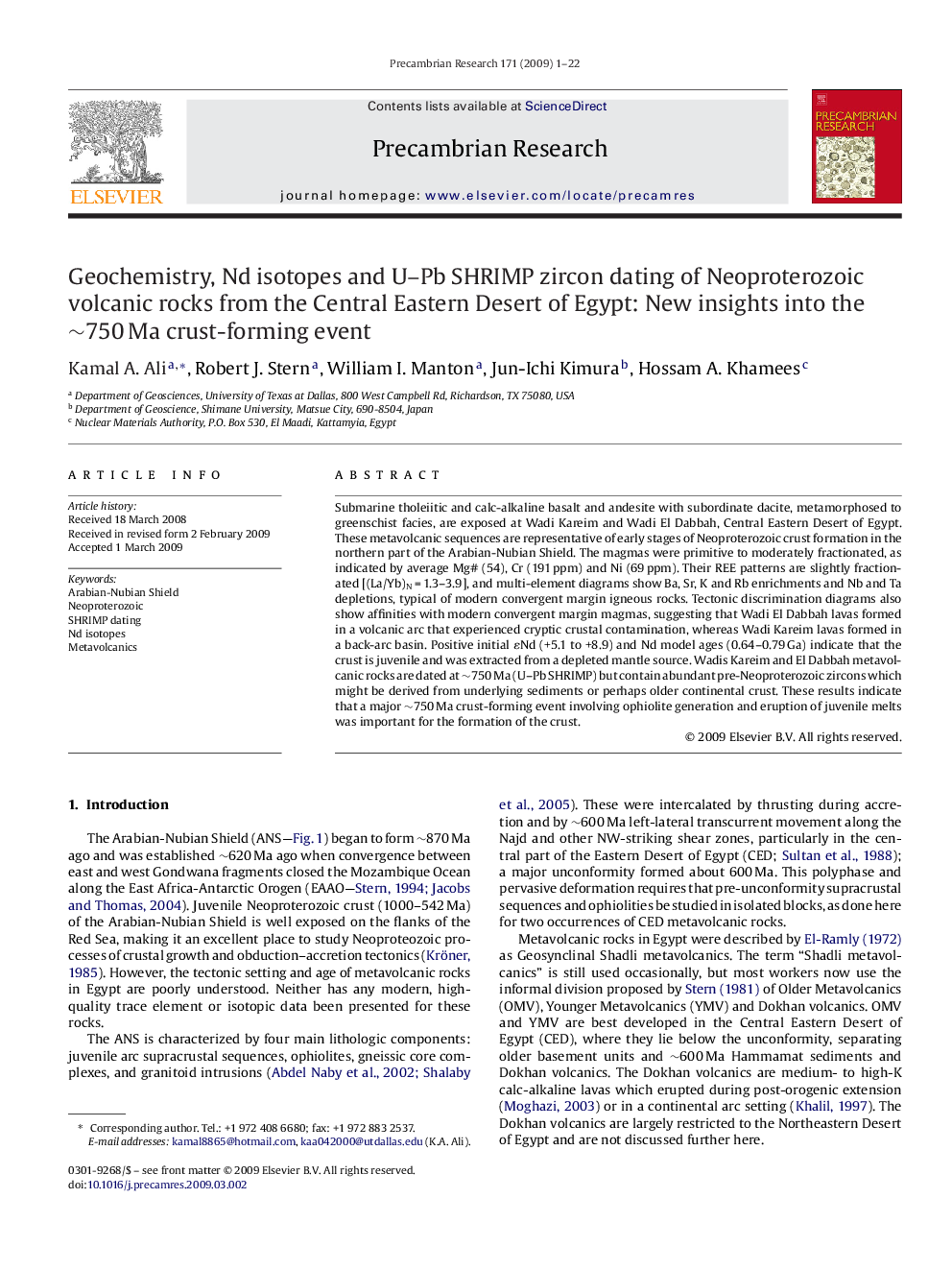| Article ID | Journal | Published Year | Pages | File Type |
|---|---|---|---|---|
| 4724073 | Precambrian Research | 2009 | 22 Pages |
Submarine tholeiitic and calc-alkaline basalt and andesite with subordinate dacite, metamorphosed to greenschist facies, are exposed at Wadi Kareim and Wadi El Dabbah, Central Eastern Desert of Egypt. These metavolcanic sequences are representative of early stages of Neoproterozoic crust formation in the northern part of the Arabian-Nubian Shield. The magmas were primitive to moderately fractionated, as indicated by average Mg# (54), Cr (191 ppm) and Ni (69 ppm). Their REE patterns are slightly fractionated [(La/Yb)N = 1.3–3.9], and multi-element diagrams show Ba, Sr, K and Rb enrichments and Nb and Ta depletions, typical of modern convergent margin igneous rocks. Tectonic discrimination diagrams also show affinities with modern convergent margin magmas, suggesting that Wadi El Dabbah lavas formed in a volcanic arc that experienced cryptic crustal contamination, whereas Wadi Kareim lavas formed in a back-arc basin. Positive initial ɛNd (+5.1 to +8.9) and Nd model ages (0.64–0.79 Ga) indicate that the crust is juvenile and was extracted from a depleted mantle source. Wadis Kareim and El Dabbah metavolcanic rocks are dated at ∼750 Ma (U–Pb SHRIMP) but contain abundant pre-Neoproterozoic zircons which might be derived from underlying sediments or perhaps older continental crust. These results indicate that a major ∼750 Ma crust-forming event involving ophiolite generation and eruption of juvenile melts was important for the formation of the crust.
